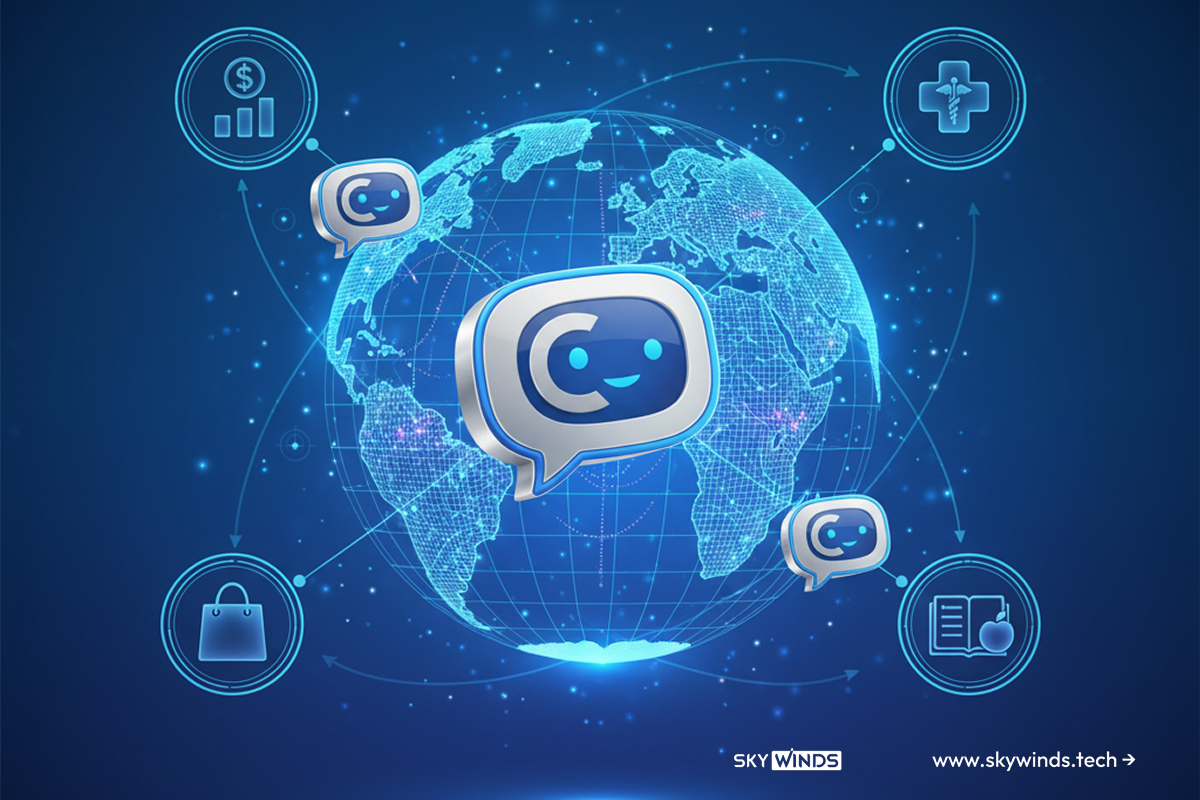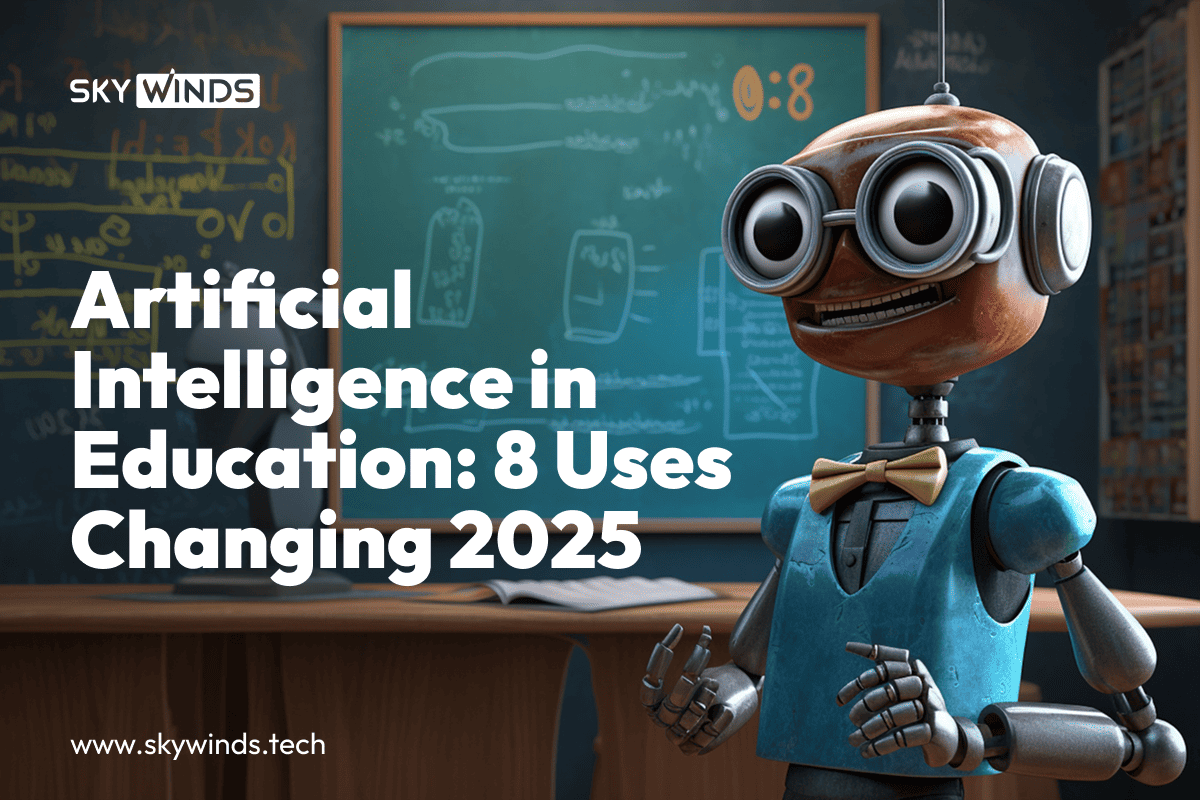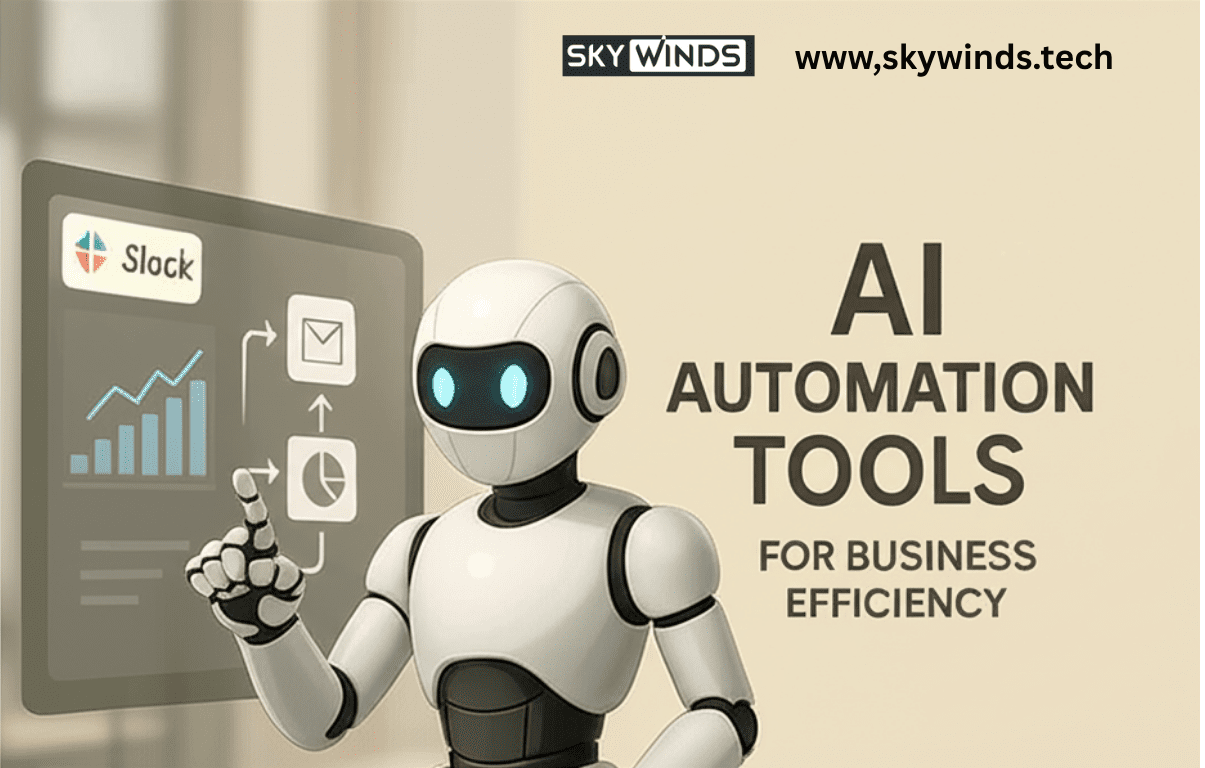Think about the last time you contacted customer support. Did you wait on hold, or did a chatbot instantly greet you and help with your issue? Chances are, it was the latter.
AI chatbots are no longer just futuristic tools they’re an everyday reality reshaping how businesses connect with customers. Whether it’s answering queries in seconds, automating lead generation, or offering personalized product suggestions, chatbots are becoming a powerful engine for growth.
And here’s the kicker: according to Gartner, by 2027, chatbots will be the primary customer service channel for 25% of businesses worldwide. That’s not just a trend—it’s a revolution.
If you haven’t already started leveraging AI chatbots, now is the time. Because while you’re waiting, your competitors are already building stronger customer relationships, cutting costs, and scaling faster with AI. At Skywinds Solutions, we create AI chatbots that do more than talk—they drive growth. Smarter, scalable, and tailored to your needs, our assistants help you cut costs, save time, and delight customers. Ready to reimagine your business with AI? Let’s make it happen.
Table of Contents
The Rise of AI Chatbots in Business
From Rule-Based to AI-Powered
In the beginning, chatbots were little more than digital FAQ machines. They followed rigid scripts and could only respond to specific keywords much like an automated IVR system (“Press 1 for billing, press 2 for support…”). Useful for simple queries, but far from conversational.
Today’s chatbots are a different story. With advancements in natural language processing (NLP), machine learning (ML), and large language models (LLMs), they’ve evolved into intelligent virtual assistants. These modern bots don’t just match keywords they understand context, adapt to conversations, and deliver personalized, human-like responses.
Why Businesses Are Shifting to AI Chatbots
- Speed: Customers expect real-time responses, not 24-hour wait times.
- Scalability: One bot can handle thousands of conversations simultaneously.
- Globalization: Businesses operate across time zones and languages; bots don’t sleep.
- Cost Efficiency: Automation cuts operational costs while improving experience.
A report from Juniper Research estimates that by 2026, AI chatbots will save businesses $11 billion annually in customer service costs.
Simply put: businesses aren’t just using chatbots they’re relying on them.
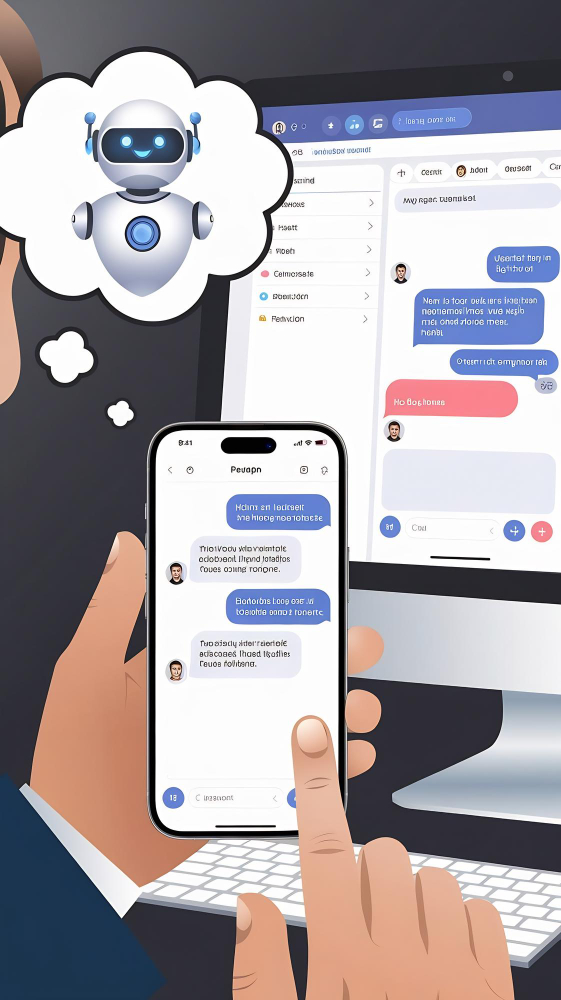
Key Benefits of AI Chatbots Today
Let’s dig deeper into the core benefits driving adoption:
1. 24/7 Customer Support
No matter what industry you’re in, customers now expect round-the-clock service. AI chatbots make this possible at scale and without burnout.
Example: E-commerce giants like Amazon use AI-powered assistants to answer questions instantly, from tracking packages to handling returns. This availability builds trust and loyalty.
2. Cost Reduction
Hiring and training support agents is expensive. AI chatbots dramatically reduce costs by automating repetitive tasks while allowing human agents to focus on high-value interactions.
McKinsey reports that businesses implementing AI in customer support can cut operational costs by up to 30%.
3. Lead Generation & Sales
AI chatbots don’t just answer questions—they sell. They qualify leads by asking smart questions, guide users through sales funnels, and even recommend products based on browsing behavior.
Example: Sephora’s chatbot helps customers pick beauty products tailored to their preferences, driving conversions directly through chat.
4. Faster Response Time
Speed is currency in customer experience. A Zendesk study revealed that 69% of customers attribute good service to quick resolution. Chatbots ensure no query goes unanswered, improving satisfaction and retention.
5. Data Insights & Personalization
Every chatbot interaction is a goldmine of data. Businesses can analyze conversations to understand customer pain points, buying intent, and satisfaction levels. AI then uses this data to deliver hyper-personalized responses.
Example: A travel chatbot can remember your past bookings and proactively suggest personalized itineraries.
Emerging Trends Every Business Must Watch
The chatbot landscape is evolving rapidly. Here are the biggest trends shaping the future:
1. Multilingual & Voice Chatbots
As businesses expand globally, multilingual support is crucial. AI chatbots powered by NLP can converse fluently in multiple languages.
Voice assistants (like Alexa and Google Assistant) are also converging with chatbots, allowing users to interact via text and voice seamlessly.
2. Hyper-Personalization with Generative AI
Gone are the days of generic replies. Using generative AI, chatbots can create personalized, context-aware conversations that feel human.
Example: Instead of saying “We have new shoes,” a bot might say: “Hi John, since you purchased running shoes last month, we thought you might like our new cushioned sneakers designed for long-distance runners.”
3. Integration with CRMs and SaaS Tools
Today’s chatbots are not standalone they’re deeply integrated with CRMs (Salesforce, HubSpot), ERPs, and marketing tools. This allows bots to pull customer history, update records in real time, and provide agents with context-rich handovers.
4. Hybrid AI + Human Models
AI isn’t replacing humans it’s enhancing them. Hybrid models allow bots to handle routine queries while escalating complex cases to humans. This ensures efficiency without losing empathy.
5. Emotionally Intelligent Bots
The next big leap? Emotional AI. By analyzing tone, sentiment, and word choice, bots will respond with empathy apologizing when customers are upset or showing excitement when they’re happy.
Industry-Specific Use Cases
E-commerce & Retail
- Personalized shopping assistants
- Cart abandonment recovery
- Instant product recommendations
Example: H&M’s chatbot helps users find clothing based on personal style preferences.
Healthcare
- Symptom checkers
- Appointment scheduling
- Medication reminders
Example: Babylon Health’s AI assistant triages symptoms before connecting users to doctors.
Finance
- Fraud alerts
- Loan eligibility checks
- Account management
Example: Bank of America’s Erica chatbot now handles millions of customer queries each month.
Education
- Virtual tutors
- Real-time doubt clearing
- Student progress tracking
Example: Duolingo’s AI-powered chat helps learners practice real conversations.
Travel & Hospitality
- Booking confirmations
- Real-time flight updates
- Multilingual travel assistance
Example: KLM’s “BlueBot” assists customers with bookings and flight information across multiple channels.
Challenges & Limitations
Despite the hype, AI chatbots face challenges:
- Complex Queries – Bots can struggle with nuanced or multi-step requests.
- Customer Trust – Some users distrust bots or prefer human agents.
- Privacy & Compliance – Handling sensitive data requires strict adherence to GDPR, HIPAA, and other laws.
- Over-Reliance on Automation – Too much dependence on bots can harm brand reputation if not balanced with human touch.
Solution: Businesses must design chatbots with clear escalation paths and transparency—always letting customers know when they’re speaking to a bot vs. a human.
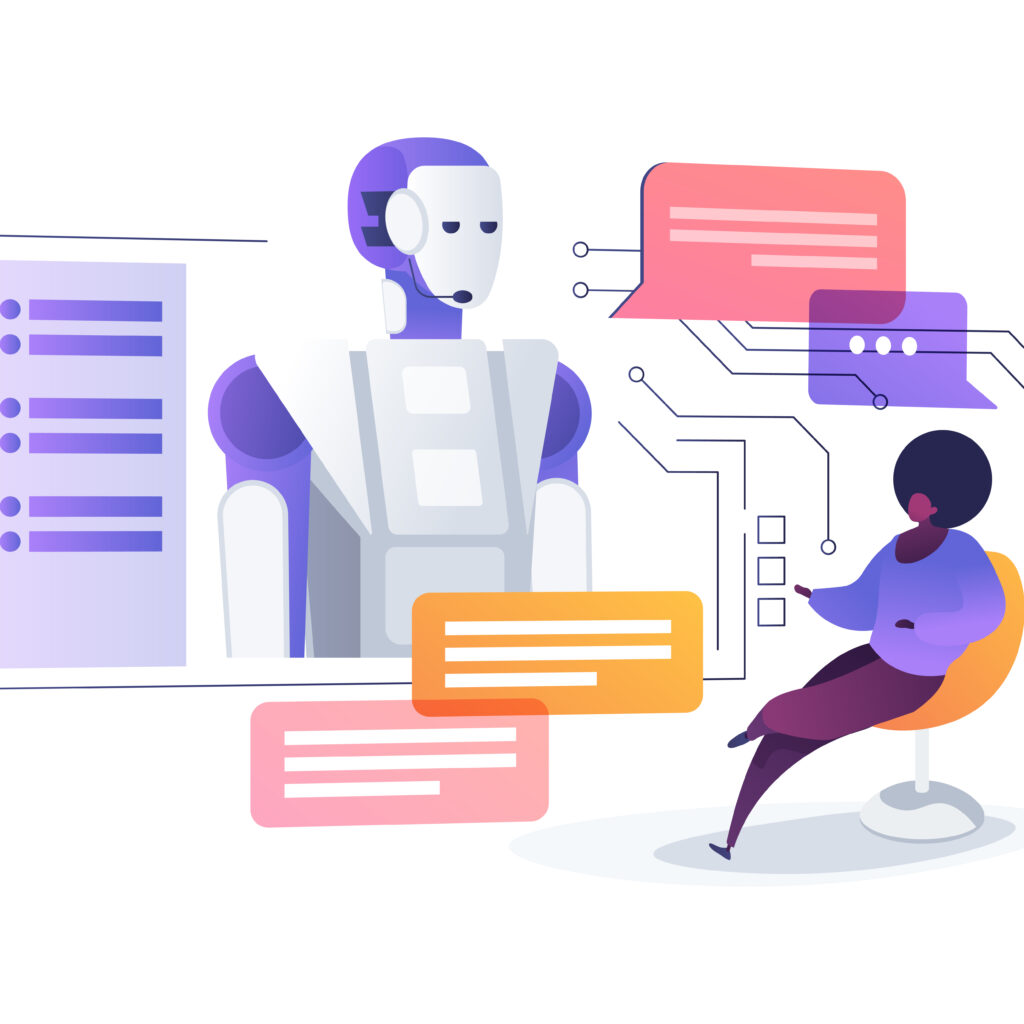
Future Outlook: Where Are AI Chatbots Headed?
From Reactive to Proactive
Instead of waiting for queries, future chatbots will proactively engage customers. Example: reminding you about an upcoming subscription renewal or suggesting a discount when it detects cart abandonment.
Agentic AI
The most exciting shift is toward Agentic AI bots that don’t just chat but take autonomous actions. Imagine a chatbot that not only reminds you to pay your electricity bill but also processes the payment for you securely, without human intervention.
Predictions for the Next 5 Years
- 90% of routine customer interactions will be handled by chatbots.
- Voice-driven bots will dominate customer support.
- AI + human synergy will be the gold standard for customer experience.
- Personalization will reach the point where bots know your preferences better than you do.
Conclusion
AI chatbots have moved from being a “nice-to-have” to an absolute business necessity. They’re transforming industries by:
- Delivering 24/7 support
- Reducing costs at scale
- Driving sales and lead generation
- Providing personalized customer experiences
- Unlocking predictive insights for business growth
At Skywinds Solutions, we don’t just build chatbots we design intelligent, scalable, and future-ready AI assistants that help businesses save time, cut costs, and engage customers like never before. Ready to see how an AI chatbot can transform your business? Let’s build the future together.
FAQs
What is the main purpose of AI chatbots in business?
AI chatbots are designed to automate customer interactions, provide instant responses, and reduce the workload on human support teams. Beyond customer service, they’re increasingly used for lead generation, sales, onboarding, and even employee support.
Will AI chatbots replace human agents completely?
No—AI chatbots are best for handling repetitive, routine queries. For complex, sensitive, or high-empathy conversations, human agents are still essential. The future lies in a hybrid model where bots handle efficiency and humans provide empathy.
How secure are AI chatbots for handling customer data?
Modern AI chatbots follow strict data protection protocols, and when integrated properly, they comply with regulations like GDPR and HIPAA. Security depends on encryption, access control, and responsible deployment by the business.
What industries benefit the most from AI chatbots?
While every industry can benefit, e-commerce, healthcare, finance, education, and travel are leading the way. Chatbots in these sectors handle millions of queries daily, offering services like product recommendations, medical symptom checks, fraud alerts, learning support, and travel bookings.

